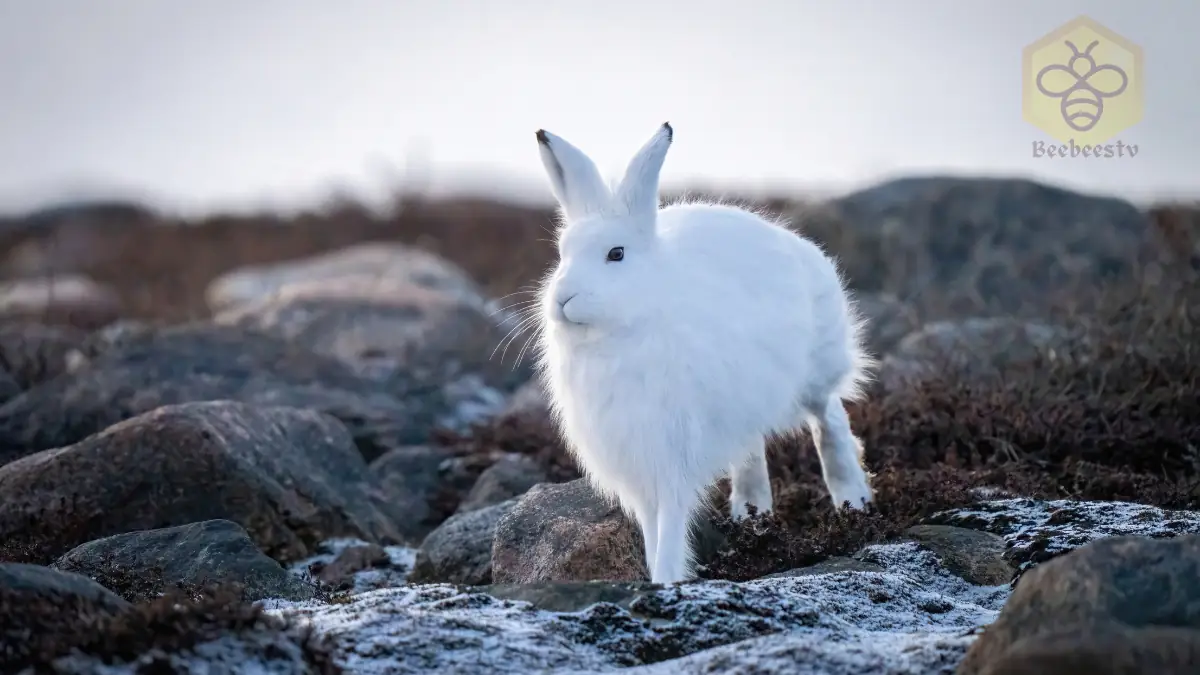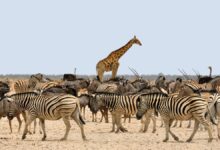Arctic Hares: The Resilient Survivors of the Frozen North

Arctic Hare: The Resilient Survivor of the Frozen North
Arctic Hare
Introduction
The Arctic Hare is a remarkable creature, perfectly adapted to the extreme cold of its habitat. With its thick fur, powerful hind legs, and unique behaviors, this hare thrives in some of the harshest conditions on Earth. Known for its ability to blend into snowy landscapes and its incredible speed, the Arctic Hare plays a vital role in the Arctic ecosystem.
Scientific Overview
Scientific Name
Lepus arcticus
Common Name
Arctic Hare
Scientific Classification
| Kingdom | Animalia |
| Phylum | Chordata |
| Class | Mammalia |
| Order | Lagomorpha |
| Family | Leporidae |
Types of Arctic Hares
While Lepus arcticus is the primary species, regional variations exist depending on their geographic location and environmental adaptations.
Habitat and Distribution
Arctic Hares inhabit the tundra regions of North America, primarily in Canada, Greenland, and parts of Alaska. They prefer open, treeless areas with plenty of rocks and shrubs for cover. Their range extends to elevations as high as 3,000 meters in some mountainous regions. These hares are well-suited to their icy environments, where temperatures often plunge below freezing.
Physical Characteristics
Size and Weight
- Length: 17-28 inches (43-70 cm).
- Weight: 6-12 pounds (2.7-5.4 kg).
Appearance
The Arctic Hare’s thick, white winter coat provides excellent camouflage in snowy environments, while its summer coat turns gray-brown to blend with rocky landscapes. It has short ears to minimize heat loss and long, powerful hind legs for rapid movement across the snow.
Diet and Feeding Habits
Arctic Hares are herbivorous, feeding on a variety of tundra vegetation. Their diet includes:
- Woody plants
- Mosses
- Lichens
- Berries
- Leaves and roots
In winter, when food is scarce, they use their strong front paws to dig through snow to find buried vegetation.

Predators and Threats
Natural Predators
- Arctic Foxes
- Wolves
- Snowy Owls
- Lynxes
Environmental Threats
While Arctic Hares are well-adapted to their environment, climate change poses a significant threat by altering their habitats and food availability.
Reproduction, Babies, and Lifespan
Arctic Hares breed during the spring when conditions are slightly warmer.
- Gestation Period: Around 50 days.
- Litter Size: 2-8 leverets (baby hares).
- Leverets: Born fully furred and with open eyes, they are highly independent from a young age.
- Lifespan: Typically 3-5 years in the wild.
Population and Conservation Status
The Arctic Hare is currently listed as Least Concern by the IUCN, thanks to its widespread range. However, local populations are influenced by habitat changes and predation. Continued monitoring is essential to understand the long-term effects of climate change on this species.
Behavior and Lifestyle
Arctic Hares are social creatures, often forming groups during the winter to conserve warmth and avoid predators. They rely on their keen senses of hearing and sight to detect danger. When threatened, they can run up to 40 mph (64 km/h) to escape predators.
Ecological Role
As herbivores, Arctic Hares help control vegetation growth and serve as prey for a variety of Arctic predators. Their presence is crucial for maintaining the balance of the Arctic food chain.
FAQs About Arctic Hares
- How do Arctic Hares survive in the cold?
Their thick fur, fat stores, and group behaviors help them conserve heat and survive freezing temperatures. - Do Arctic Hares hibernate?
No, they remain active throughout the year, even in the harsh winter months. - What is the difference between an Arctic Hare and a rabbit?
Arctic Hares are larger, have longer hind legs, and are better adapted to cold climates compared to rabbits. - How fast can an Arctic Hare run?
Arctic Hares can reach speeds of up to 40 mph, making them one of the fastest animals in their environment. - What predators hunt Arctic Hares?
Common predators include Arctic Foxes, Wolves, and Snowy Owls.
Conclusion
The Arctic Hare is a fascinating example of nature’s adaptability. Its ability to thrive in the icy tundra, coupled with its role in the ecosystem, makes it a crucial species for the Arctic environment. Protecting its habitat is essential for preserving the delicate balance of life in these frozen landscapes.


